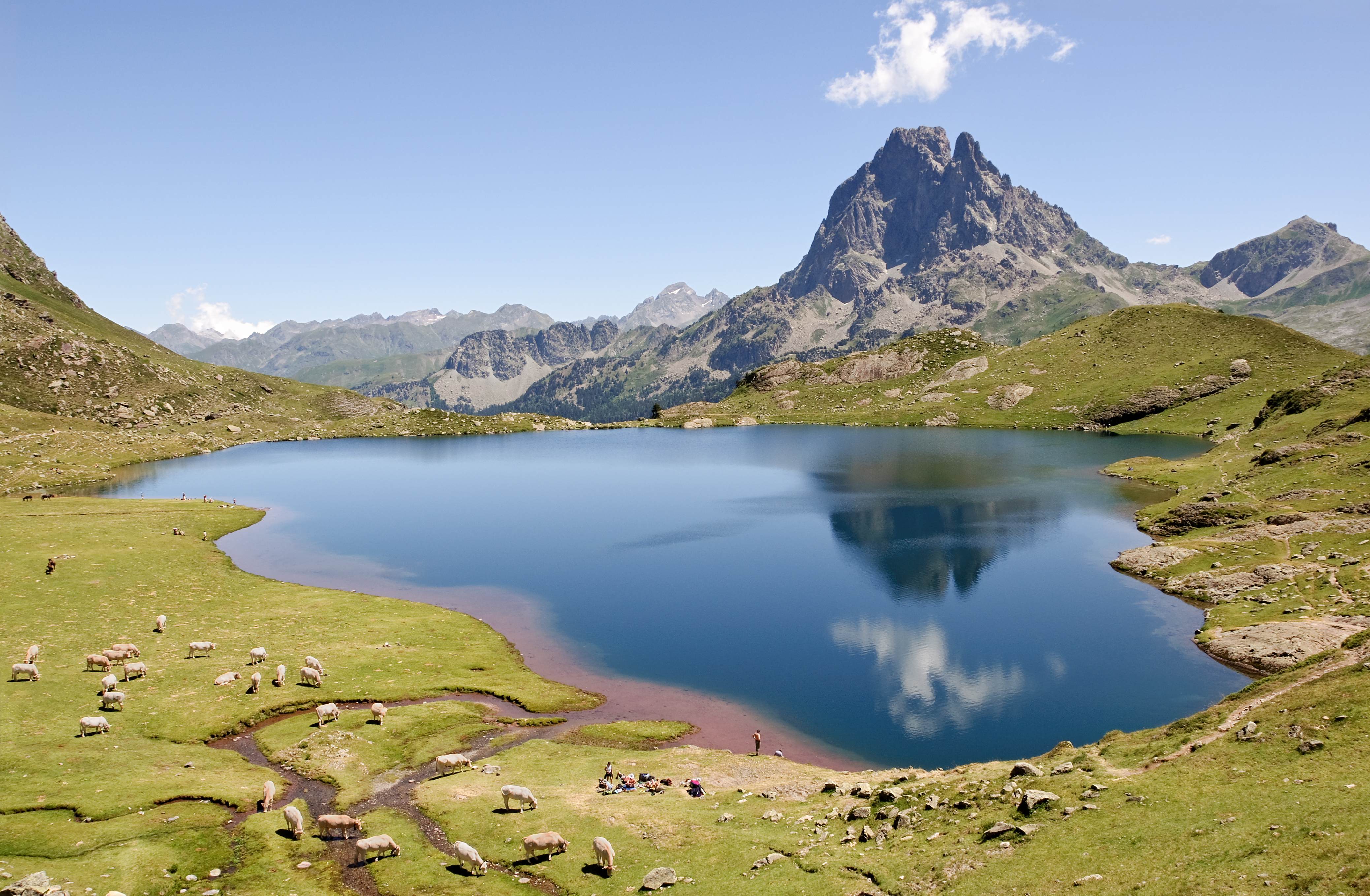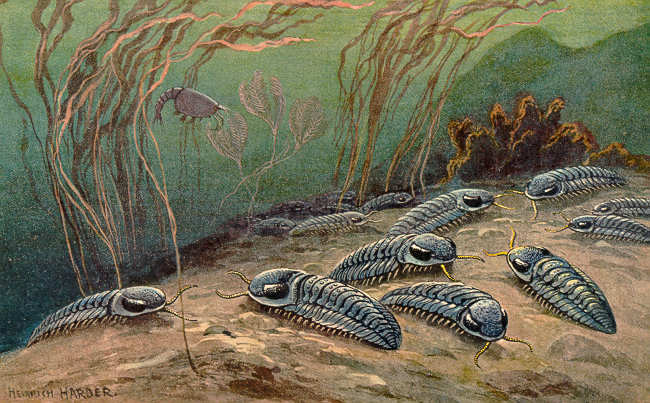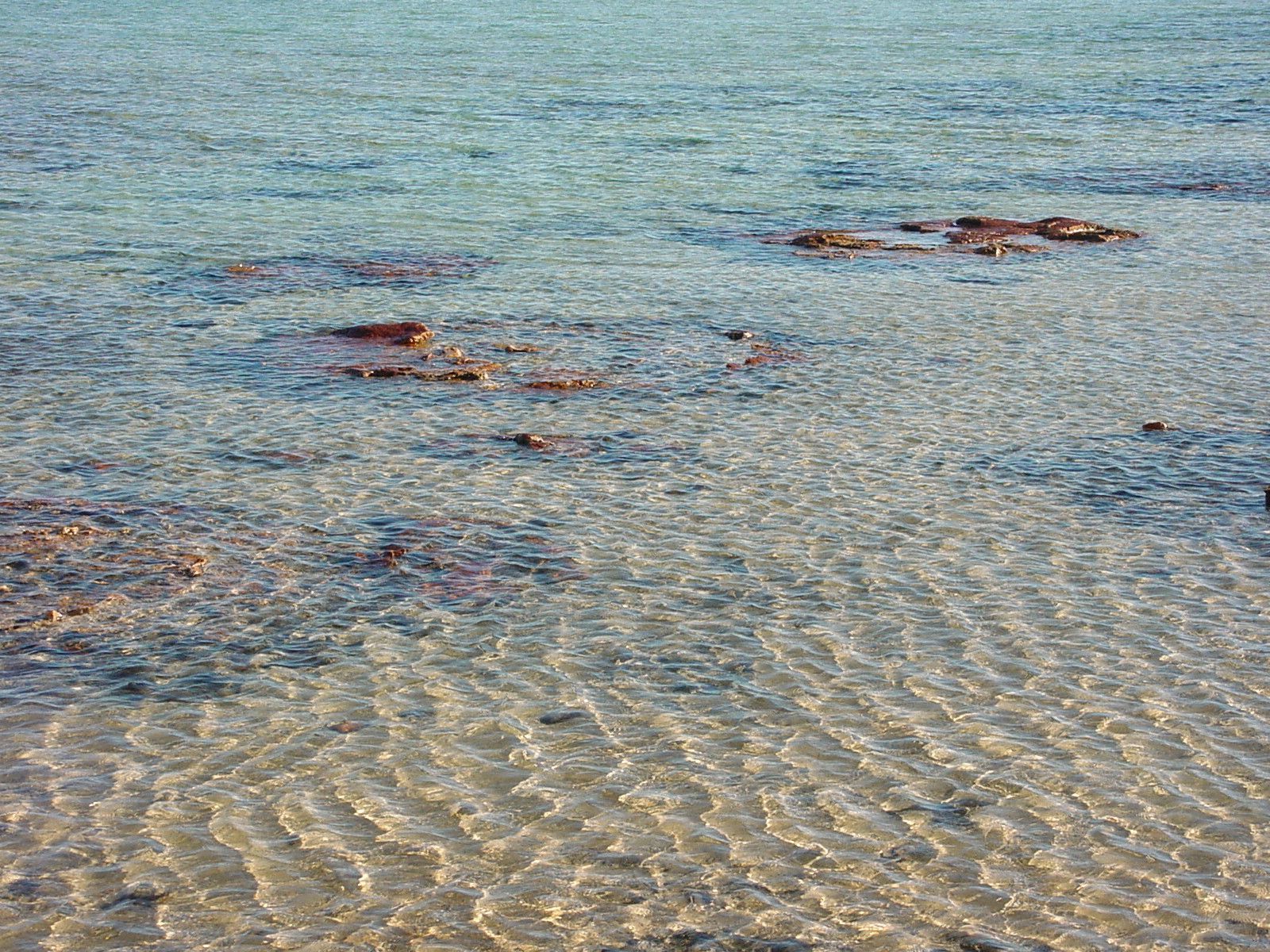|
Thrombolites
Thrombolites (from Ancient Greek θρόμβος ''thrómbos'' meaning "clot" and λῐ́θος ''líthos'' meaning "stone") are clotted accretionary structures formed in shallow water by the trapping, binding, and cementation of sedimentary grains by biofilms of microorganisms, especially cyanobacteria. Structures Thrombolites have a clotted structure without the laminae of stromatolites. Each clot within a thrombolite mound is a separate cyanobacterial colony. The clots are on the scale of millimetres to centimetres and may be interspersed with sand, mud or sparry carbonate. Clots that make up thrombolites are called thromboids to avoid confusion with other clotted textures. The larger clots make up more than 40% of a thrombolite's volume and each clot has a complex internal structure of cells and rimmed lobes resulting primarily from calcification of the cyanobacterial colony. Very little sediment is found within the clots because the main growth method is calcificati ... [...More Info...] [...Related Items...] OR: [Wikipedia] [Google] [Baidu] |
Stromatolite
Stromatolites () or stromatoliths () are layered sedimentary formations (microbialite) that are created mainly by photosynthetic microorganisms such as cyanobacteria, sulfate-reducing bacteria, and Pseudomonadota (formerly proteobacteria). These microorganisms produce adhesive compounds that cement sand and other rocky materials to form mineral "microbial mats". In turn, these mats build up layer by layer, growing gradually over time. A stromatolite may grow to a meter or more. Although they are rare today, fossilized stromatolites provide records of ancient life on Earth. Morphology Stromatolites are layered, biochemical, accretionary structures formed in shallow water by the trapping, binding and cementation of sedimentary grains in biofilms (specifically microbial mats), through the action of certain microbial lifeforms, especially cyanobacteria. They exhibit a variety of forms and structures, or morphologies, including conical, stratiform, domal, columnar, and branching ... [...More Info...] [...Related Items...] OR: [Wikipedia] [Google] [Baidu] |
Stromatolite
Stromatolites () or stromatoliths () are layered sedimentary formations (microbialite) that are created mainly by photosynthetic microorganisms such as cyanobacteria, sulfate-reducing bacteria, and Pseudomonadota (formerly proteobacteria). These microorganisms produce adhesive compounds that cement sand and other rocky materials to form mineral "microbial mats". In turn, these mats build up layer by layer, growing gradually over time. A stromatolite may grow to a meter or more. Although they are rare today, fossilized stromatolites provide records of ancient life on Earth. Morphology Stromatolites are layered, biochemical, accretionary structures formed in shallow water by the trapping, binding and cementation of sedimentary grains in biofilms (specifically microbial mats), through the action of certain microbial lifeforms, especially cyanobacteria. They exhibit a variety of forms and structures, or morphologies, including conical, stratiform, domal, columnar, and branching ... [...More Info...] [...Related Items...] OR: [Wikipedia] [Google] [Baidu] |
Lake Clifton SMC 2008
A lake is an area filled with water, localized in a Depression (geology), basin, surrounded by land, and distinct from any river or other outlet that serves to feed or drain the lake. Lakes lie on land and are not part of the World Ocean, ocean, although, like the much larger oceans, they do form part of the Earth's water cycle. Lakes are distinct from lagoons, which are generally coastal parts of the ocean. Lakes are typically larger and deeper than ponds, which also lie on land, though there are no official or scientific definitions. Lakes can be contrasted with rivers or streams, which usually flow in a channel on land. Most lakes are fed and drained by rivers and streams. Natural lakes are generally found in mountainous areas, rift zones, and areas with ongoing glacier, glaciation. Other lakes are found in endorheic basins or along the courses of mature rivers, where a river channel has widened into a basin. Some parts of the world have many lakes formed by the chaotic dra ... [...More Info...] [...Related Items...] OR: [Wikipedia] [Google] [Baidu] |
Micropaleontology
Micropaleontology (American spelling; spelled micropalaeontology in European usage) is the branch of paleontology (palaeontology) that studies microfossils, or fossils that require the use of a microscope to see the organism, its morphology and its characteristic details. Microfossils Microfossils are fossils that are generally between 0.001mm and 1 mm in size, the study of which requires the use of light or electron microscopy. Fossils which can be studied by the naked eye or low-powered magnification, such as a hand lens, are referred to as macrofossils. For example, some colonial organisms, such as Bryozoa (especially the Cheilostomata) have relatively large colonies, but are classified by fine skeletal details of the small individuals of the colony. In another example, many fossil genera of Foraminifera, which are protists are known from shells (called "tests") that were as big as coins, such as the genus '' Nummulites''. Microfossils are a common feature of the g ... [...More Info...] [...Related Items...] OR: [Wikipedia] [Google] [Baidu] |
Paleozoic
The Paleozoic (or Palaeozoic) Era is the earliest of three geologic eras of the Phanerozoic Eon. The name ''Paleozoic'' ( ;) was coined by the British geologist Adam Sedgwick in 1838 by combining the Greek words ''palaiós'' (, "old") and ''zōḗ'' (), "life", meaning "ancient life" ). It is the longest of the Phanerozoic eras, lasting from , and is subdivided into six geologic periods (from oldest to youngest): # Cambrian # Ordovician # Silurian # Devonian # Carboniferous # Permian The Paleozoic comes after the Neoproterozoic Era of the Proterozoic Eon and is followed by the Mesozoic Era. The Paleozoic was a time of dramatic geological, climatic, and evolutionary change. The Cambrian witnessed the most rapid and widespread diversification of life in Earth's history, known as the Cambrian explosion, in which most modern phyla first appeared. Arthropods, molluscs, fish, amphibians, reptiles, and synapsids all evolved during the Paleozoic. Life began in the ocean ... [...More Info...] [...Related Items...] OR: [Wikipedia] [Google] [Baidu] |
Neoproterozoic
The Neoproterozoic Era is the unit of geologic time from 1 billion to 538.8 million years ago. It is the last era of the Precambrian Supereon and the Proterozoic Eon; it is subdivided into the Tonian, Cryogenian, and Ediacaran periods. It is preceded by the Mesoproterozoic Era and succeeded by the Paleozoic Era of the Phanerozoic Eon. The most severe glaciation known in the geologic record occurred during the Cryogenian, when ice sheets may have reached the equator and formed a " Snowball Earth". The earliest fossils of complex multicellular life are found in the Ediacaran Period. These organisms make up the Ediacaran biota, including the oldest definitive animals in the fossil record. According to Rino and co-workers, the sum of the continental crust formed in the Pan-African orogeny and the Grenville orogeny makes the Neoproterozoic the period of Earth's history that has produced most continental crust. Geology At the onset of the Neoproterozoic the supercontine ... [...More Info...] [...Related Items...] OR: [Wikipedia] [Google] [Baidu] |
Ocean
The ocean (also the sea or the world ocean) is the body of salt water that covers approximately 70.8% of the surface of Earth and contains 97% of Earth's water. An ocean can also refer to any of the large bodies of water into which the world ocean is conventionally divided."Ocean." ''Merriam-Webster.com Dictionary'', Merriam-Webster, [...More Info...] [...Related Items...] OR: [Wikipedia] [Google] [Baidu] |
Shallow Water Marine Environment
Shallow water marine environment refers to the area between the shore and deeper water, such as a reef wall or a shelf break. This environment is characterized by oceanic, geological and biological conditions, as described below. The water in this environment is shallow and clear, allowing the formation of different sedimentary structures, carbonate rocks, coral reefs, and allowing certain organisms to survive and become fossils. Sediment The sediment itself is often composed of limestone, which forms readily in shallow, warm calm waters. The shallow marine environments are not exclusively composed of siliciclastic or carbonaceous sediments. While they cannot always coexist, it is possible to have a shallow marine environment composed solely of carbonaceous sediment or one that is composed completely of siliciclastic sediment. Shallow water marine sediment is made up of larger grain sizes because smaller grains have been washed out to deeper water. Within sedimentary rocks comp ... [...More Info...] [...Related Items...] OR: [Wikipedia] [Google] [Baidu] |
Sedimentary Rock
Sedimentary rocks are types of rock that are formed by the accumulation or deposition of mineral or organic particles at Earth's surface, followed by cementation. Sedimentation is the collective name for processes that cause these particles to settle in place. The particles that form a sedimentary rock are called sediment, and may be composed of geological detritus (minerals) or biological detritus (organic matter). The geological detritus originated from weathering and erosion of existing rocks, or from the solidification of molten lava blobs erupted by volcanoes. The geological detritus is transported to the place of deposition by water, wind, ice or mass movement, which are called agents of denudation. Biological detritus was formed by bodies and parts (mainly shells) of dead aquatic organisms, as well as their fecal mass, suspended in water and slowly piling up on the floor of water bodies (marine snow). Sedimentation may also occur as dissolved minerals precipitate from ... [...More Info...] [...Related Items...] OR: [Wikipedia] [Google] [Baidu] |
Accretion (geology)
Accretion, in geology, is a process by which material is added to a tectonic plate at a subduction zone, frequently on the edge of existing continental landmasses. The added material may be sediment, volcanic arcs, seamounts, oceanic crust or other igneous features. Description Accretion involves the addition of material to a tectonic plate via subduction, the process by which one plate is forced under the other when two plates collide. The plate which is being forced down, the subducted plate, is pushed against the upper, over-riding plate. Sediment on the ocean floor of the subducting plate is often scraped off as the plate descends. This accumulated material is called an accretionary wedge (or accretionary prism), which is pushed against and attaches to the upper plate. In addition to accumulated ocean sediments, volcanic island arcs or seamounts present on the subducting plate may be amalgamated onto existing continental crust on the upper plate, increasing the continental ... [...More Info...] [...Related Items...] OR: [Wikipedia] [Google] [Baidu] |
Microbialite
Microbialite is a benthic sedimentary deposit made of carbonate mud (particle diameter < 5 μm) that is formed with the mediation of microbes. The constituent carbonate mud is a type of , or authigenic mud, and therefore it precipitates in situ instead of being transported and deposited. Being formed in situ, a microbialite can be seen as a type of boundstone where reef builders are microbes, and precipitation of carbonate is biotically induced instead of forming tests, shells or skeletons. Microbialites can also be defined as |
Algae
Algae (; singular alga ) is an informal term for a large and diverse group of photosynthetic eukaryotic organisms. It is a polyphyletic grouping that includes species from multiple distinct clades. Included organisms range from unicellular microalgae, such as ''Chlorella,'' ''Prototheca'' and the diatoms, to multicellular forms, such as the giant kelp, a large brown alga which may grow up to in length. Most are aquatic and autotrophic (they generate food internally) and lack many of the distinct cell and tissue types, such as stomata, xylem and phloem that are found in land plants. The largest and most complex marine algae are called seaweeds, while the most complex freshwater forms are the ''Charophyta'', a division of green algae which includes, for example, ''Spirogyra'' and stoneworts. No definition of algae is generally accepted. One definition is that algae "have chlorophyll ''a'' as their primary photosynthetic pigment and lack a sterile covering of cells around thei ... [...More Info...] [...Related Items...] OR: [Wikipedia] [Google] [Baidu] |







